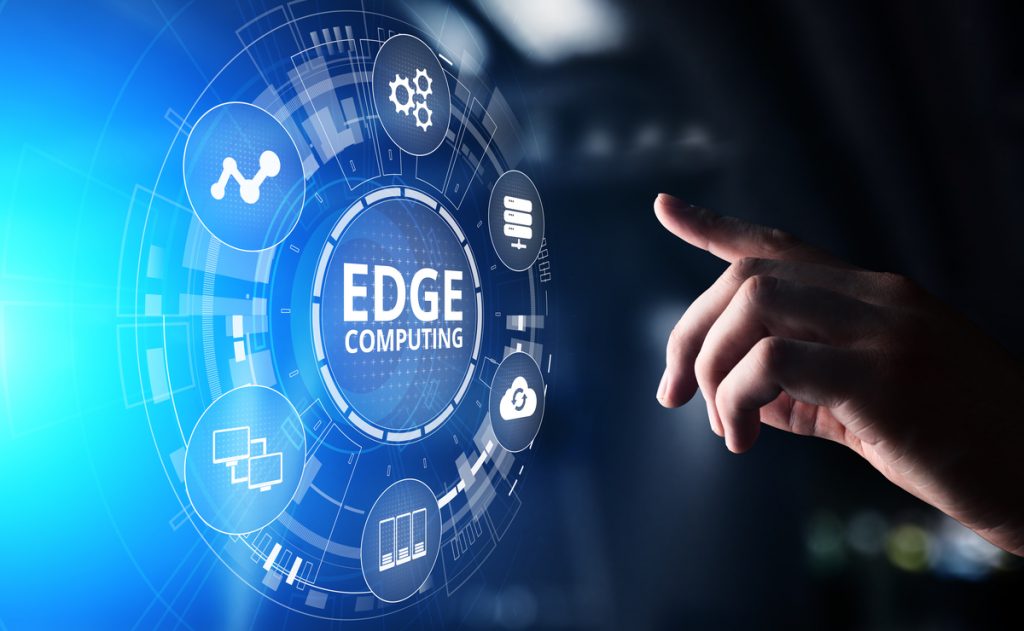While there is a demand for faster data processing, companies are jumping from cloud to edge. One can characterize this technology by distributed, open AI architecture-powered decentralized processing, wherein edge allows data processing within the device in less than a few milliseconds, which gives real-time insights. The popularity given to edge computing comes due to the rising state of Internet of Things (IoT) devices.
Do you want to be a part of the next-gen tech revolution?
Edge computing will make a significant part of the upcoming revolution. It is a distributed information technology (IT) architecture where client data is processed at the periphery of the network as closest to originating source as possible.
The easy language moves the portion of the storage and computes resources out of the central data center and near the source of data itself. Here, nothing like transmitting raw data to a central data center takes place. Edge computing occurs wherever the data gets generated, be it a retail store, factory floor, or a business marketplace. It is responsible for reshaping complete business computing and IT.
But how does it work?
Edge computing is all the matter of location. Previously, data was created at the client’s endpoint that means on the side of the user’s computer.
What are edge computing challenges?
The critical problem is to identify the functions that need to be performed at the edge. The reason is edge hardware is comparatively less powerful than any other data processing technologies. Thus, to make the most of it, one needs to put an edge at strategic endpoints for some set of functions.
Also, these edge devices tend to be present at remote locations, and the appliances should be efficient to run with the least intervention. Even if the edge system requires less maintenance, it is updated and monitored as and when needed.
Moreover, one constraint is that such devices have a limited computing footprint. And it is the reason why implementing the functionalities of the full-fledged data center is challenging.
What are edge computing benefits?
The industrial benefits of edge computing will become more and more apparent. Self-driving cars in the automotive sector will rely on edge for navigation and point of sales terminals at retail outlets to managing data for a better customer experience.
Since these services and applications require low latency and uninterrupted internet connectivity, edge vendors should ensure uninterrupted data connectivity or system that can operate independently.
Edge computing can become more beneficial if the edge vendors are ready to ensure the device’s physical security, logical security, and data security. The vendors should be keen about investing in the local network because, without protection, each point can create entry space for malicious entities.
What are edge computing applications in various industries?
Various industries adopt the technology of edge computing. Some of the applications that take a unique place are as follows:
Smart cities – Smart cities can’t reach any place without edge computing technology. The devices used for these technologies collect information to do fundamental processing tasks, which is the core of smart city development.
Security – There are installed edge computing devices that identify and flag unusual behavior in real-time, which eventually give counter actions, acting as a security surveillance system.
Oil and amp; gas industry – Real-time monitoring activity plays a significant role in the oil and amp; gas industry. The advanced machinery powered by IoT sensors is implemented at isolated places to secure critical machinery and other systems against disasters.
Manufacturing – The technology called edge computing allows the machine to make decisions. It eradicates the need for human intervention. Also, it reduces the expenses that are mapped in terms of time and costs.
Healthcare – In this industry, edge computing encourages connectivity between machine-to-human and machine-to-machine. It will also maintain the availability of medical software and services in rural and remote areas.
Financial sector – It is easy for banks to build branches of general and white labels, assisted remotely by using computer edge analytics and vision. It ensures the availability of financial banking products and services to consumers.
Traffic management – The real-time data is improved, and it is one of the best methods for doing traffic management in place. Intelligent transportation networks make extensive use of edge computing technologies, especially for traffic management processes.
All of the above
People like me have fears about edge computing which are hard to mention. Overall, the technology can transform the future, and the justification follows.
When Google, Amazon, Microsoft, Apple manage the devices in your home and offices, there is hardly a thing to worry about security. There is no need to worry about updates. There is no need to worry about functionalities. And there is no need to worry about capabilities.
Till now, self-driving cars are the best examples of edge computing. With latency, privacy, bandwidth, it is impossible to feed all the sensors of self-driving cars to the cloud and wait for a response. A trip cannot survive this kind of latency, and even if it can, the cellular network is inconsistent to rely on it for this kind of work.
Simultaneously, cars are one thing that shifts from user responsibility for the software they run on devices. A self-driving car needs to be managed centrally. It requires getting updates from the manufacturer automatically, and it needs to send processed data back to the cloud to improve the algorithm.
So ultimately, edge computing offers several advantages over traditional forms of network architecture. It will continue to play an essential role for companies in the future. And, as there are more and more internet-connected devices hitting the market, innovative organizations have just done a bit of what’s possible with edge computing.














